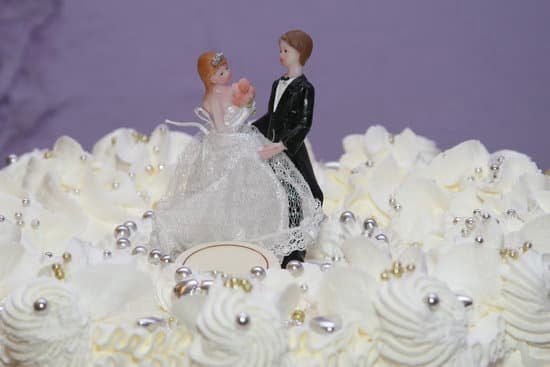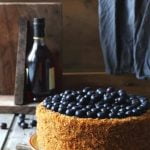The beauty and charm of two tiered cakes have made them a popular choice for various occasions. Whether it’s a wedding, birthday, or anniversary celebration, these stunning confections never fail to impress as centerpieces.
Decorating a two tiered cake is crucial in creating an eye-catching masterpiece that not only looks impressive but also tastes delicious. In this article, we will guide you through the process of decorating a two tiered cake, from essential tools and ingredients to personalized decorations and serving tips.
Two tiered cakes have a certain allure that captures the attention of everyone in the room. The combination of multiple layers creates a visual impact that simply cannot be replicated by single-tier cakes. Their grandeur and elegance make them highly sought after for special occasions where creating a wow factor is important.
Decorating a two tiered cake is essential to elevate its beauty and turn it into a show-stopping centerpiece. By carefully selecting techniques, tools, and ingredients, you can transform ordinary cake layers into works of art. From simple buttercream designs to intricate fondant creations, there are endless possibilities when it comes to adorning a two tiered cake.
By following the steps outlined in this article, you will learn how to prepare the cake layers for decoration, achieve a smooth finish with crumb coating, use fondant for a professional look, add flair with buttercream decorations, accentuate with edible embellishments, personalize the top tier with unique cake toppers, and present your masterpiece with confidence.
So get ready to unleash your creativity and embark on an exciting journey into the world of two tiered cake decoration. With the right knowledge and tools at your disposal, you can create an unforgettable centerpiece that will leave your guests in awe. Let’s dive in and discover the art of decorating a two tiered cake.
Essential Tools and Ingredients for Two Tiered Cake Decoration
To create a stunning two tiered cake, it is essential to have the right tools and ingredients. These items will not only make the decoration process easier but also contribute to the overall aesthetic appeal of the cake. Here are some must-have tools and ingredients for decorating a two tiered cake:
Tools:
- Cake stands: Invest in a sturdy, reliable cake stand that can support the weight of multiple tiers.
- Offset spatulas: These spatulas are perfect for spreading fillings and frostings evenly on the cake layers.
- Piping bags: Essential for creating intricate designs and patterns on the cake.
- Decorating tips: These tips come in various shapes and sizes, allowing you to achieve different decorative effects.
Ingredients:
- Fondant: A versatile icing that can be rolled out and draped over the entire cake for a smooth, polished appearance.
- Buttercream: Perfect for piping details onto the cake or adding texture with various techniques.
- Edible embellishments: Sprinkles, pearls, edible flowers, or gold leaf can add an extra touch of elegance and luxury to your two tiered cake.
Having these tools and ingredients on hand will set you up for success when it comes to decorating your two tiered cake. They provide you with the foundation needed to bring your creative vision to life.
When selecting these items, quality is key. Investing in high-quality tools and ingredients will ensure that your decorating experience goes smoothly and that the final result exceeds expectations. Remember to always use fresh, high-quality ingredients like real butter and premium chocolate for the best flavors.
With these essential tools and ingredients at your disposal, you’ll be well-equipped to create a visually stunning masterpiece that will impress all who lay eyes on it.
Preparing the Cake Layers for Decoration
Once you have your cake layers baked and cooled, it’s time to prepare them for decoration. This step is crucial in ensuring that your two tiered cake is stable, level, and ready for the final touches. Here are some step-by-step instructions on how to properly prepare the cake layers for decoration:
- Leveling: Start by leveling each individual cake layer. Use a serrated knife or a cake leveler to carefully remove any domes or uneven surfaces from the tops of the cakes. This will create a flat and even surface for stacking.
- Torting: If desired, you can also torte your cake layers to add delicious fillings in between. Carefully slice each layer horizontally into two or more equal parts using a sharp knife or a cake leveler. This will create multiple layers with alternating cake and filling.
- Stacking: Once all the layers are leveled and optionally torted, it’s time to stack them on top of each other. Apply a thin layer of buttercream or ganache onto the bottom layer to act as an adhesive. Place the second layer on top and continue this process until all layers are stacked.
- Support: Depending on the size and weight of your upper tier, you may need to provide additional support for stability during decoration. You can insert dowels or food-safe supports into the bottom tier before placing the upper one on top.
By following these steps, you will ensure that your two tiered cake has a stable base for decorating without any collapses or tilting. Remember to take your time and handle the cake layers with care during this process.
| Step | Description |
|---|---|
| Leveling | Carefully remove domes or uneven surfaces from each cake layer. |
| Torting | Optional step to slice each layer into multiple equal parts for fillings. |
| Stacking | Apply buttercream or ganache between layers and stack them on top of each other. |
| Support | Add dowels or food-safe supports if needed for stability. |
Crumb Coating and Finalizing the Shape
Once you have stacked and leveled your cake layers, it’s time to move on to the next crucial step in decorating a two tiered cake – crumb coating and finalizing the shape. Crumb coating is an essential technique that helps achieve a smooth and seamless finish on the exterior of your cake. It also serves as a protective layer between the cake and the decorative icing.
To begin, ensure that your cake layers are completely cooled before starting the crumb coat. Using a long, offset spatula or a bench scraper, apply a thin layer of buttercream frosting all over the cake, covering any visible crumbs. This initial coat acts as a glue to hold everything together.
Next, refrigerate the crumb-coated cakes for about 20 minutes to allow the frosting to firm up. This will make it easier to apply subsequent layers without disturbing or collecting any more crumbs. After chilling, apply another layer of buttercream to fully cover the cake, smoothing it out as much as possible.
Once you have achieved a smooth surface on both tiers, take some time to finalize the shape of your two tiered cake. Use a clean ruler or spatula to ensure that each tier is level and even. Adjust accordingly by adding or removing small amounts of buttercream until you achieve desired results.
By applying a crumb coat and finalizing the shape of your two tiered cake, you create a solid foundation for further decoration. These steps not only help achieve an aesthetically pleasing appearance but also guarantee stability throughout the process, ensuring that your masterpiece remains intact until it’s ready to be served and enjoyed by all.
Designing the Exterior
When it comes to creating a stunning and professional look for your two tiered cake, using fondant is a game-changer. Fondant not only gives your cake a flawless and polished appearance, but it also allows you to add texture, patterns, and intricate designs that are sure to impress. Follow these steps to cover both tiers with fondant and achieve a professional finish:
- Prepare the cake: Before applying fondant, make sure your cakes are properly leveled and crumb coated. The crumb coat will help the fondant adhere smoothly to the cake without any crumbs showing through. Apply a thin layer of buttercream or ganache all over each tier before moving on to the next step.
- Roll out the fondant: Dust your work surface with powdered sugar or cornstarch to prevent sticking. Roll out your fondant into a large, even circle that is about 1/4 inch thick. Measure the circumference of each tier with a string or measuring tape and use it as a guide to cut out two fondant circles that are slightly larger than each tier.
- Apply the fondant: Gently lift one of the rolled-out fondant circles using your rolling pin or by carefully folding it in half and then in quarters. Lay it over one tier and unfold it, smoothing it down gently with your hands from top to bottom and around the sides. Repeat this process for the second tier.
- Trim and smooth: Trim off any excess fondant using a sharp knife or pizza cutter close to the base of each tier. Use gentle upward strokes with a smoother tool or your hands wrapped in plastic wrap to smooth out any wrinkles or air bubbles on the surface of the fondant.
- Add texture or patterns (optional): To give your two tiered cake some unique flair, consider adding texture or patterns using embossing mats, molds, or stencils. These tools can create intricate designs or replicate textured effects like lace or quilting. Simply press the texture tool onto the fondant gently, being careful not to distort the shape of the cake.
With these steps, you can confidently use fondant to create a professional and visually stunning exterior for your two tiered cake. Remember to practice and experiment with different techniques to find your own personal style and design.
Buttercream Decorations
Adding buttercream decorations to a two tiered cake not only adds flair and visual interest, but it also introduces delicious flavors that will enhance the overall taste experience. Buttercream is a versatile decorating medium that allows for endless possibilities in terms of design and creativity. In this section, we will explore various buttercream decoration techniques and provide ideas for flavor variations to match different themes or occasions.
Piping Rosettes
One of the most popular buttercream decoration techniques is piping rosettes. Rosettes can be created using a variety of piping tips, such as star or round tips, depending on the desired effect. To pipe a rosette, hold the piping bag at a 90-degree angle to the surface of the cake and apply steady pressure while swirling the tip in a circular motion.
This will create beautiful, voluminous rosettes. Experiment with different colors and sizes to create visually stunning patterns on your two tiered cake.
Borders and Ruffles
Another way to add elegance to your two tiered cake is by creating borders or ruffles with buttercream. Borders can be piped along the top or bottom edge of each tier using a flat tip or petal tip. These borders can be simple swags, shells, or zigzags to complement the overall design of the cake.
Ruffles, on the other hand, add texture and movement to the sides of each tier. To create ruffles, use a petal tip and pipe thin strips of buttercream in an overlapping pattern.
Flavor Variations
Apart from adding decorative elements to your two tiered cake, buttercream has the added benefit of providing additional flavors. While classic vanilla or chocolate buttercream are always crowd-pleasers, consider experimenting with different flavor variations for an extra touch of creativity.
Some ideas include lemon zest buttercream for a refreshing citrus flavor, salted caramel buttercream for a rich and indulgent taste, or even matcha buttercream for a unique twist. Select flavors that complement the cake’s base flavors or the overall theme of the occasion.
By incorporating these buttercream decoration techniques and flavor variations into your two tiered cake, you can elevate its visual appeal and delight everyone with delectable flavors. Remember to practice piping techniques beforehand on parchment paper to perfect your skills and gain confidence. Don’t be afraid to experiment with different designs and flavors to create a truly stunning centerpiece for your next special occasion.
Accentuating with Edible Embellishments
Edible embellishments are a fantastic way to elevate the aesthetics of a two tiered cake and add an extra touch of sophistication. These edible decorations not only enhance the visual appeal of the cake but also provide additional flavor and texture variations. When it comes to choosing edible embellishments, the possibilities are endless, allowing you to customize your cake to suit any occasion or theme.
One popular option for edible embellishments is using edible flowers. These delicate blooms can add a touch of elegance and natural beauty to your two tiered cake. Edible flowers are available in a variety of colors and flavors, including roses, pansies, violets, and marigolds. Ensure that the flowers you choose are safe for consumption by purchasing them from reputable sources or growing them yourself without the use of pesticides.
Sprinkles are another fun and vibrant way to accentuate your two tiered cake. Whether you opt for classic rainbow sprinkles or themed ones like stars or hearts, sprinkles can instantly bring life and joy to your creation. Consider using different types of sprinkles for contrasting textures on each tier or creating unique patterns such as ombre effects.
If you’re looking to add a touch of luxury and elegance, consider using pearls or gold leaf as edible embellishments. Pearls can be used individually or strung together into elegant strands to drape around the tiers. Gold leaf, on the other hand, can be delicately applied in small patches or used generously to create glamorous accents. Both options exude opulence and will make your two tiered cake truly stand out.
Remember that while these edible embellishments can take your cake decoration to the next level, less is often more when it comes to their application. Be mindful not to overpower the overall design by applying too many elements at once. Instead, select a few focal points strategically placed on the tiers that complement each other well.
By incorporating these creative and delicious embellishments, you can transform your two tiered cake into a work of art that not only looks stunning but also delights everyone’s taste buds. The key is to choose embellishments that align with the theme or occasion, and allow your imagination to run wild as you explore various possibilities. So go ahead and experiment with different combinations, textures, and flavors to create a visually captivating and scrumptious masterpiece.
Personalizing the Top Tier
The top tier of a two tiered cake provides a perfect opportunity to personalize and customize the cake according to the occasion or the individual’s preferences. Adding a unique cake topper can instantly elevate the visual appeal of the cake and make it even more special. A carefully chosen cake topper can serve as a focal point and reflect the theme or style of the event.
There are numerous options for cake toppers, ranging from traditional figurines to modern designs that incorporate personal elements. For weddings, classic bride and groom figurines are popular choices, while birthdays and anniversaries often call for customized toppers that represent hobbies, interests, or milestones. Cake toppers can also be personalized with names, initials, dates, or short messages using various materials such as acrylic, wood, or metal.
When selecting a cake topper, it is important to consider the size and design of the top tier. The topper should be proportionate in size so that it stands out but does not overwhelm the overall look of the cake.
It should also complement the colors and decor already present on the cake. Additionally, if using decorative elements like flowers or mini bunting for the rest of the cake, it is advisable to coordinate these with the chosen cake topper for a cohesive look.
For those who prefer a more hands-on approach, customizing a cake topper is an excellent option. This allows individuals to create something truly unique that resonates with their own style or preferences. DIY options include crafting personalized clay figurines or using edible decorations like sugar flowers or chocolate decorations shaped into meaningful symbols or messages.
| Tips for Personalizing Cake Toppers | Examples |
|---|---|
| Consider incorporating hobbies or interests into the design | A miniature surfboard for a beach-themed cake |
| Use initials or names of the couple for a wedding cake | Monogram cake toppers |
| Include important dates or milestones on the topper | A number-shaped topper for a significant birthday |
| Experiment with different materials such as acrylic, wood, or metal | A rustic wooden cake topper for a countryside-themed wedding |
Presentation and Serving Tips
Presentation and serving are crucial aspects of showcasing a beautifully decorated two-tiered cake. After putting in all the effort to create a stunning centerpiece, it’s important to ensure that it is transported, displayed, and served with care to preserve its beauty. In this section, we will provide you with some valuable tips on how to present and serve your masterpiece.
Transporting the two-tiered cake requires special care to prevent any damage during transit. It is recommended to place the cake on a non-slip mat or secure it in a sturdy cake box. To provide extra support and stability, placing a non-skid mat or damp towel underneath the box can help prevent any movement. It’s advisable to drive slowly and avoid sharp turns or sudden stops while transporting the cake.
Once you’ve reached your destination, it’s time to think about how you want to display the cake. A beautiful cake stand or pedestal can elevate the overall presentation of your masterpiece. Ensure that the stand is sturdy enough to support the weight of the tiers and that it complements the design and theme of your cake.
When it comes time to serve the two-tiered cake, proper slicing techniques are essential for maintaining its appearance. Use a long serrated knife dipped in hot water and dried before each slice for clean cuts. Start by cutting through the top tier, then proceed down to the bottom tier. Serve each slice with care, using a spatula or offset spatula if necessary, ensuring that all guests receive an equal portion of both tiers.
Pairing suggestions can enhance your guests’ experience when enjoying your beautifully decorated two-tiered cake. Consider offering complementing flavors such as fresh fruit, chocolate ganache drizzle, or a dollop of whipped cream alongside each slice. This thoughtful pairing can elevate both taste and presentation.
By following these presentation and serving tips, you can confidently showcase your masterpiece and leave your guests in awe. Remember that every detail counts when it comes to presenting and serving your two-tiered cake. With careful execution, you can ensure that your hard work pays off, leaving a lasting impression on all who indulge in your delicious creation.
Conclusion
In conclusion, decorating a two tiered cake is a wonderful opportunity to showcase your creativity and create a stunning centerpiece for any occasion. By following the essential tools and ingredients needed for decoration, preparing the cake layers properly, crumb coating and finalizing the shape, and designing the exterior with fondant or buttercream, you can achieve a professional look that will impress your guests.
Adding flair and flavors with buttercream decorations and accentuating with edible embellishments will further enhance the overall aesthetics of your two tiered cake. Personalizing the top tier with unique cake toppers allows you to customize the cake to match specific events or individuals’ preferences.
Finally, presentation and serving tips are crucial in ensuring that all your hard work in decoration is showcased and enjoyed by everyone. Transporting, displaying, and serving the two tiered cake should be done carefully to avoid compromising its decorations. By following proper cake slicing techniques and considering pairing suggestions for various flavors, you can elevate the experience of enjoying your beautifully decorated masterpiece.
Remember, decorating a two tiered cake is not only about creating a visually appealing dessert but also about expressing your artistic side. So don’t be afraid to unleash your creativity and experiment with different designs, flavors, and decorations. Enjoy the process of creating your own unique two tiered cakes and relish in the satisfaction of seeing your hard work pay off when you display them for all to enjoy.
Frequently Asked Questions
How to layer a 2 tier cake?
To layer a 2-tier cake, start by preparing the cakes. Bake two round cakes in different sizes, one larger than the other. Allow them to cool completely before proceeding. Once cooled, level the tops of both cakes to create an even surface. Place the larger cake on your serving plate or cake board and spread a thin layer of frosting on top.
Carefully place the smaller cake on top, aligning it with the center of the bottom layer. Apply another layer of frosting in between the two cakes to adhere them together firmly. Use a spatula or offset spatula to spread a generous amount of frosting on top and around the sides of the entire cake for a crumb coat. Then, apply another thicker layer of frosting over the crumb coat for a smooth finish. Decorate as desired.
How do you stack and frost a 2 layer cake?
To stack and frost a 2-layer cake, begin by baking two round cakes of equal size and allowing them to cool fully. Level off any domed tops so that they are flat and even. Place one cake layer on your serving plate or cake board, ensuring it is centered properly. Spread a generous amount of frosting evenly over this first layer, making sure it reaches all edges and corners using an offset spatula or butter knife.
Next, carefully place the second cake layer directly on top, aligning it with the bottom layer’s edges. Apply pressure gently to allow them to stick together securely with the frosting acting as glue between layers. Use more frosting to cover the top and sides of the cake with a thin crumb coat before finalizing with another thicker layer for a smooth finish.
How many layers should a 2 tier cake have?
A 2-tier cake typically consists of two separate stacked tiers where each tier is made up of multiple layers sandwiched together with filling or frosting in between them for stability and flavor enhancement. The number of layers will depend on personal preference; however, conventionally, most 2-tier cakes have each tier consisting of two to three cake layers.
This provides a good balance between height and stability while still allowing for structural support and easy slicing. Ultimately, the number of layers for each tier should be determined based on the desired overall appearance, taste, and structural integrity of the cake when planning its construction.

Welcome to our cake decorating blog! My name is Destiny Flores, and I am the proud owner of a cake decorating business named Cake Karma. Our mission is to provide delicious, beautiful cakes for all occasions. We specialize in creating custom cakes that are tailored specifically to each customer’s individual needs and tastes.





